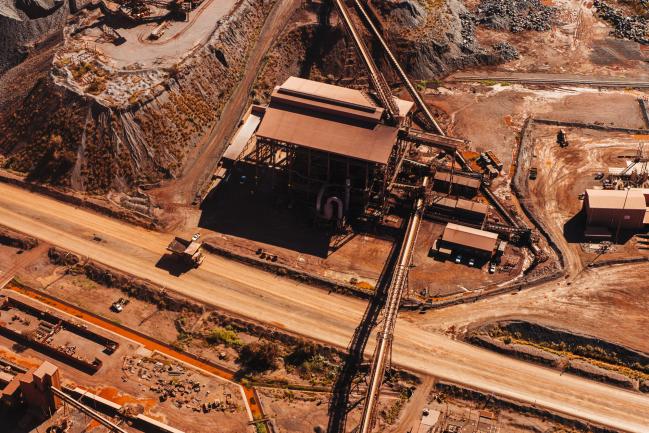(Bloomberg) -- The global iron ore market was convulsed on Wednesday after Brazil’s Vale SA, the world’s largest producer, outlined plans to cut output after a deadly dam breach, buoying shares of rivals as investors weighed the impact of the disruption. Prices soared, with futures rallying more than 9 percent.
Vale will decommission some tailings dams, curbing production by 40 million tons a year, Chief Executive Officer Fabio Schvartsman said at a press conference, citing a plan presented to the Energy and Environment Ministries. The impact will be offset by an increase in production from other systems, Vale said. The company had planned to mine 400 million tons this year.
The severity of the fallout will hinge on Vale’s ability, as well as efforts by other miners, to make up the tons that’ll be lost. A sharp reduction in supply, if that happens, would tighten the global seaborne market, aiding Rio Tinto (LON:RIO) Group, BHP Group and Anglo American (LON:AAL) Plc, while lifting costs for steelmakers across the globe. One of Vale’s dams collapsed last Friday, hammering the company’s share price and spurring speculation that while the affected operation was minor, the repercussions would affect a greater share of output.
“Vale certainly has the ability to replace 40 million tons in output, and in fact it’d initially have 50 million tons of flexible production,” said Vivek Dhar, an analyst at Commonwealth Bank of Australia. “But the key question is how quickly they’ll be able to compensate that output, bearing in mind social, political pressures, and that investigations are still ongoing.”
On Singapore Exchange Ltd., futures jumped as much as 9.5 percent to $86.10 a ton, the highest since March 2017, while the contract in Dalian went limit-up. Even before Vale’s announcement of the cut, benchmark ore for immediate delivery hit $80.25 a ton on Tuesday, according to Mysteel.com.
Australian miners soared. Rio advanced as much as 7.3 percent to A$89.65, the highest intraday level since September 2008, while BHP Group rose as much as 4.9 percent, and Fortescue Metals Group Ltd. was up as much as 9.9 percent.
Other Systems
“The estimated impact of the production stoppage is about 40 million tons of iron ore per year, including in this figure the pellet feed needed for the production of 11 million tons of pellets, an impact that will be offset by the increase in production of other systems,” Vale said.
The global seaborne market totals about 1.6 billion tons, according to the Australian government. Forty million tons equals 2.5 percent of that figure.
Goldman Sachs Group Inc (NYSE:GS). boosted its iron ore outlook after Vale’s statement, raising its three, six and 12-month forecasts to $80, $70 and $65 a ton from previous targets of $70, $60 and $60. The bank estimated Vale’s output would contract by between 10 million and 15 million tons this year as the miner would be able to offset some, but not all, of the losses, according to a note.
The accident happened at a time when the seaborne market “was already tight,” Goldman said, warning prices are likely to go “significantly higher.” There could additional hits to supply as “the incident may lead authorities to tighten environmental checks and affect other companies’ production,” it said.
Vale’s decision could also have dramatic consequences for the global shipping industry, reducing the volume of cargoes carried between Brazil and top user China, as well as to ports in Europe.
“It is a severe blow to Capesize vessels,” said Bloomberg Intelligence senior analyst Rahul Kapoor. “Already reeling from weak seasonality and Chinese slowdown, loss of significant iron ore volumes from Vale will exacerbate the vessel oversupply.”
(Updates to add Goldman’s outlook in ninth, tenth paragraphs.)
